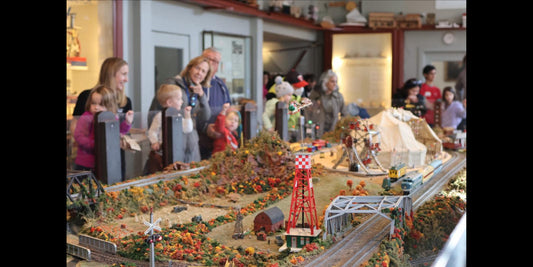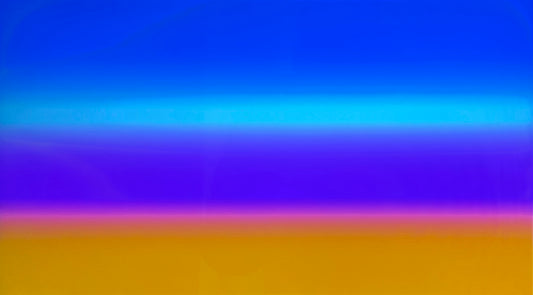Most of the time, in order to cross the road, you have to be on the road. You wait for the traffic signal, look both ways, then, like Dustin Hoffman’s Ratso Rizzo in Midnight Cowboy, you hope for the best.
But some roads you don’t have to touch. With skyways—enclosed pedestrian bridges between buildings that are otherwise divided by traffic—you don’t even have to go outside. The city of Calgary in Alberta, Canada, has elevated them to the level of infrastructure, with well over 100 buildings connected by the Plus 15 Skywalk—so named because each bridge rises about 15 feet above its street. You can come fairly close to crossing downtown Calgary from end to end without putting on your coat.
The closest New Haven comes to that kind of continuous overhead coverage is the downtown Yale New Haven Health complex and the Yale Medical Campus, which use at least nine skyways to connect to each other and to facilities across five streets. These are an instrument of expediency for doctors but also one of mercy for patients, who may be walking assisted to and from their parked cars. The canniest fulfillment of the latter purpose is the skyway linking the Air Rights parking garage to the Smilow Cancer Hospital. With an airy lobby full of natural light and natural endgrain flooring, the hospital extends itself across the gap to hasten your arrival, placing a guard at the foot of the stairs to the skyway and a directory and welcome signage at the top.

The ability of an institution to move across the gap is shared by the Barnard Environmental Science & Technology School on Derby Avenue. Above four lanes plus two more turning lanes of state road, a skyway connects the school to the Barnard Nature Center in West River Memorial Park. There, students encounter the sort of classroom facilities they had just left behind, but they also encounter a menagerie of turtles and snakes and a rooftop garden. Just outside is the park itself with its playing field, plantlife and mud for hands-on and hands-in learning. The skyway turns the actual environment into part of the textbook environment the kids are studying. Getting there amounts to a field trip without the trip.
Suspended between the two buildings, the skyway becomes part of the classroom too. Inside, it’s a nondescript structure of glass and steel, but the windows looking out on Derby Avenue are a canvas, where kids have honed a message and broadcasted it in paint to passing traffic. There are countless handprints in blue to let you know the kids approve this message, but there are also, as of this publication, two rallying cries—on one side, “Let’s build a better Earth,” and on the other, “Save Our Species.” That the kids at Barnard are growing up to inhabit the world people of driving age are currently creating suggests that drivers should make a point to look.

It’s the traditional nature of skyways that they remove the traffic from the skywalker’s consideration and vice versa, but they handily reverse these objectives when put to expressive use. Inside the Barnard skyway, the painted letters are backwards and you’re too close to each pane of window to see the big picture, but approaching drivers are face to face with it. Here, the skyway notices the drivers, and the drivers are meant to notice.

Jump ahead 12 or more school years, and the skyway at CT State Community College Gateway is doing something similar. Crossing over George Street just east of the Temple Street Garage, the skyway rises to accommodate four stories of students walking back and forth along what the designers of the building, Perkins & Wills, have dubbed an “internal street” that seamlessly joins both sides of the college. The height of the skyway also accommodates the Learning Wall–a massive LED display of coaster-sized pixels–each lighting up a single color at a time. It’s pretty to look at while standing inside the skyway–and you can sense a picture emerging–but only when you’ve left the building and crossed the intersection on George Street do you see the faces—of students and staff in slow-motion video—as plain as day. (The installation was designed by a Los Angeles artists’ collective called Electroland.) Some of the actual people walking inside, small and blithely unaware of you, are at the same time big and looking right at you.

City skyways tend to give off a future-is-now vibe, with clean lines and glass panels where video art is not out of place. The term “skyway” is itself futuristic-sounding. But the Yale University Art Gallery’s enclosed bridge over High Street evokes the past, with its turrets, relief figures and oxidized copper clocks. It was originally built to link what were then the Yale Gallery of Fine Arts and the Yale School of the Fine Arts. It even takes you backward in time, from a building erected in 1926 to a building erected in 1866.
The bridge’s interior also takes you back, via Monets, Seurats, Rousseaus, Cézannes, Gauguins and van Goghs in ornate gilded frames. The space itself is clean and contemporary, and it mostly hides the fact that you’re standing directly over High Street. The gallery’s grand renovation in 2006 cleverly disguises its occupation of three different buildings, turning the bridge into another room–or, to be precise, four on the 2nd level and one on the 3rd. The windows on the skyway’s lower level are Gothic and secretive; some are walled off from interior view, while the rest, facing north, are veiled by screens to protect the artwork from sunlight. The latter look out over one-way traffic that’s always receding, though Camille Pissarro’s A Seated Peasant Woman, mounted just inside, looks in the opposite direction.

On the upper level, three works by Edward Hopper hang where windows would be, but windows feature prominently in the paintings themselves, along with three human figures. Like Pissarro’s peasant woman, two of the figures look inward, in spite of their sun-drenched proximity to whatever’s outside. I stopped here to contemplate their expressions, then contemplated the notion that, contrary to their more basic purpose, stopping to look is what the best skyways encourage you to do.
Written by David Zukowski. Images 1 (featuring YNHH) and 3 (featuring Barnard) photographed by David Zukowski. Images 2 (Barnard), 4 (Gateway), 5 (YUAG) and 6 (Edward Hopper’s Western Motel at YUAG) photographed by Dan Mims. This updated story was originally published on October 23, 2018.







